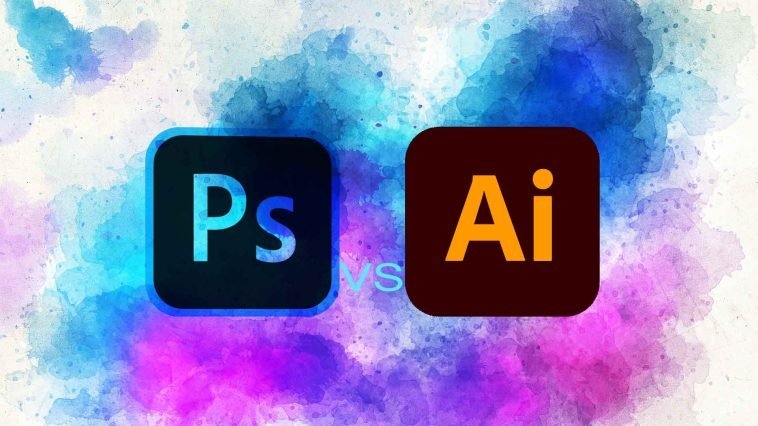Introduction.
Smart Objects are a powerful feature in Adobe Photoshop that allows for non-destructive editing and flexibility in your design workflow.
By converting layers or groups of layers into Smart Objects, you can preserve the original content, apply filters and transformations, and make adjustments without permanently altering the pixels.
Smart Objects also enable you to scale your designs without loss of quality, making them ideal for creating reusable elements, templates, and mockups.
Whether you’re a graphic designer, photographer, or digital artist, understanding how to create and use Smart Objects in Photoshop can greatly enhance your creative process and improve the overall quality of your designs.
In this guide, we will explore the process of creating a Smart Object in Adobe Photoshop.
We will walk you through the step-by-step process of converting layers or groups of layers into Smart Objects, allowing for greater flexibility and non-destructive editing.
We will also cover various techniques and features that can be applied to Smart Objects, such as filters, transformations, and adjustments.
By mastering the art of working with Smart Objects, you’ll be able to streamline your design workflow, make edits with ease, and maintain the highest level of image quality.
By the end of this tutorial, you will have a solid understanding of how to create and use Smart Objects in Photoshop, empowering you to work more efficiently and effectively in your creative projects.
So, let’s dive into the world of Smart Objects and discover the endless possibilities they offer in Adobe Photoshop.
How Do I Create a Smart Object In Photoshop?
One such feature is Smart Objects, which allow for non-destructive editing and greater flexibility when working on your designs.
By converting layers or groups of layers into Smart Objects, you can preserve the original content, apply filters and transformations, and make adjustments without permanently altering the pixels.
Smart Objects also enable you to scale your designs without any loss of quality, making them invaluable for creating reusable elements, templates, and mockups.
In this article, we will guide you through the step-by-step process of creating a Smart Object in Adobe Photoshop, empowering you to work more efficiently and effectively on your creative projects.
Step 1: Open Adobe Photoshop and Import Your Image.
Launch Adobe Photoshop and open the image or artwork that you want to work with. To open an image, go to File > Open and navigate to the location of your file. Select it and click “Open” to import it into Photoshop.
Step 2: Select the Layers to Convert into a Smart Object.
In the Layers panel, select the layers or group of layers that you want to convert into a Smart Object. You can select multiple layers by holding down the Shift key and clicking on each layer.
Step 3: Convert to Smart Object.
With the desired layers selected, right-click on one of the selected layers and choose “Convert to Smart Object” from the context menu.
Alternatively, you can go to the Layers menu at the top of the Photoshop interface, select “Smart Objects,” and choose “Convert to Smart Object.”
Step 4: Edit the Smart Object.
After converting the selected layers into a Smart Object, you will notice a new thumbnail appear in the Layers panel. Double-click on this thumbnail to open the Smart Object in a new tab. Any edits you make within the Smart Object will be applied non-destructively to the original layers.
Step 5: Apply Filters, Transformations, and Adjustments.
Within the Smart Object tab, you can apply various filters, transformations, and adjustments to modify the content. Use the Filter menu to apply effects like blurring, sharpening, or artistic filters.
Use the Edit menu to make adjustments such as brightness, contrast, or colour corrections. You can also transform or resize the Smart Object without any loss of quality.
Step 6: Save and Update the Smart Object.
Once you have made the desired edits to the Smart Object, save the changes by going to File > Save or using the shortcut Ctrl/Cmd + S. The Smart Object in the main document will automatically update with the edited content.
Step 7: Reuse the Smart Object.
One of the advantages of Smart Objects is their reusability. You can use the same Smart Object in multiple documents by simply dragging and dropping it from one document to another. Any edits made to the original Smart Object will be reflected in all instances.
Conclusion.
Creating Smart Objects in Adobe Photoshop provides you with a powerful tool for non-destructive editing and flexibility in your design workflow.
By following the step-by-step process outlined in this article, you can convert layers or groups of layers into Smart Objects, allowing for greater control and efficiency in your creative projects.
Remember to experiment with filters, transformations, and adjustments within the Smart Object tab to achieve the desired effects.
With practice and creativity, you’ll master the art of working with Smart Objects and elevate the quality of your designs in Adobe Photoshop. So, embrace the power of Smart Objects, optimize your workflow, and unlock new possibilities in your creative journey.






GIPHY App Key not set. Please check settings